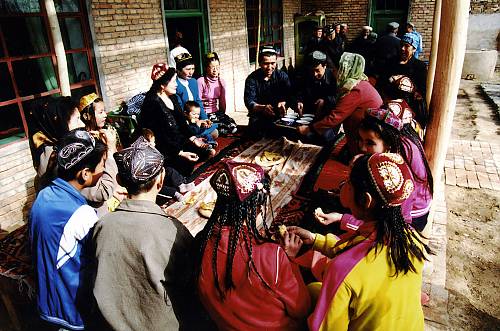Le Meshrep
Inscrit en 2010 (5.COM) sur la Liste du patrimoine immatériel nécessitant une sauvegarde urgente
Répandu chez les Ouïgours, largement concentrés dans la région autonome ouïgoure du Xinjiang de la Chine, le Meshrep constitue le principal vecteur culturel des traditions ouïgoures. L’événement complet du Meshrep recèle une riche collection de traditions et d’arts du spectacle, tels que la musique, la danse, le théâtre, les arts populaires, l’acrobatie, la littérature orale, les habitudes alimentaires et les jeux. Le muqam ouïgour est la forme d’art la plus complète comprise dans l’événement qui intègre le chant, la danse et le divertissement. Le Meshrep fonctionne à la fois comme une « cour » où l’hôte agit en médiateur des conflits et assure la préservation des règles morales, et comme une « salle de classe » où les gens peuvent s’instruire sur leurs coutumes traditionnelles. Le Meshrep est surtout transmis et hérité par des hôtes qui en connaissent les usages et les connotations culturelles, et par les interprètes virtuoses qui y participent ainsi que par toute la population ouïgoure qui y assiste. Toutefois, il y a de nombreux facteurs qui mettent sa viabilité en péril, tels que les mutations sociales qui résultent de l’urbanisation et de l’industrialisation, l’influence des cultures nationales et étrangères, et l’exode des jeunes Ouïgours vers les villes pour travailler. La fréquence des représentations et le nombre de participants diminuent progressivement, tandis que le nombre de transmetteurs qui connaissent les règles traditionnelles et le riche contenu de l’événement est passé brutalement de plusieurs centaines à quelques dizaines.










